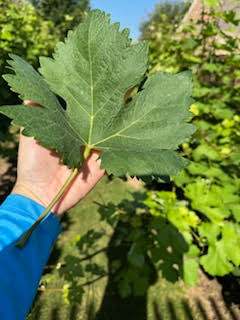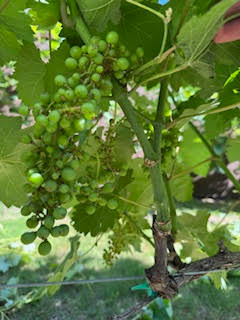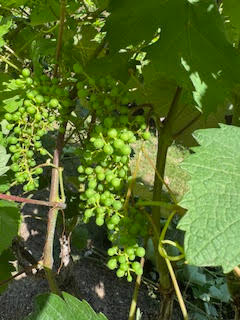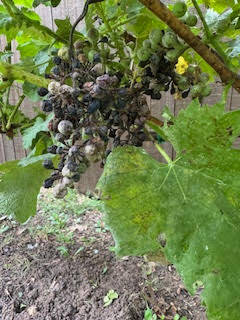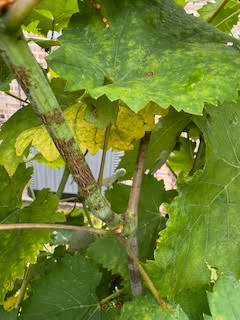Follow up on last season’s harvest, the summary of which is copied below. We didn’t wait the three weeks for the reds as there wasn’t going to be anything left if we did, picked what little remained after two weeks. What remained was mainly petit Verdot and tannt with a few random bunches of other things that somehow survived the squirrel attack. Brix at harvest was 16.5. Let everything soak for a day, added sugar to bring brix to 19 and pitched yeast. Pressed off after a day. Pressing in this case is using a mesh strainer and a potato masher as there was only enough for one gallon plus a 500 ml bottle.
Many years ago, we switched over to only making sparkling. The vineyard has a shading problem that delays harvest and then the late season rains lead to rot problems, reducing both yield and quality. Picking weeks earlier for sparkling avoids most of those problems.
This weekend we bottled what little we harvested last year. Nine bottles of white and five bottles of red. As feared the white at this point seems like it will be one of the best vintages to date. Surprisingly, the red was so good that we should have bottled it as a light still red for immediate consumption. It would make a perfect summer red but unfortunately, we didn’t taste the sample I pulled until after we added the sugar and yeast culture. Lesson learned but I would have never guessed that 16.5 brix tannt and petit Verdot would not taste harsh. Now we wait for it to sparkle but rarely does the wine get worse at this point. Most get better and some improve drastically. I expect both of these to be some of the best wines we have made, just so little of it that it won’t last long. The wife has labeled this vintage “Year of the squirrel “
I did buy new nets that hopefully will work to keep the squirrels out this year. They feel as heavy as my old nets that worked for years before degrading. It is sold as both bird netting and mole netting. If these don’t work, I will have to move to more extreme measures next year.
